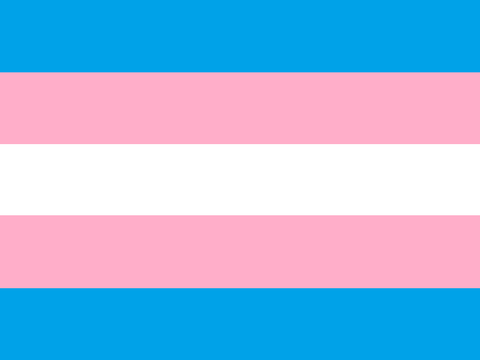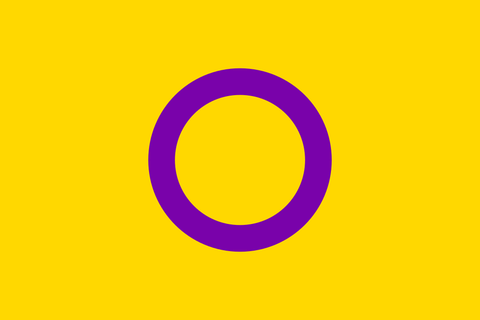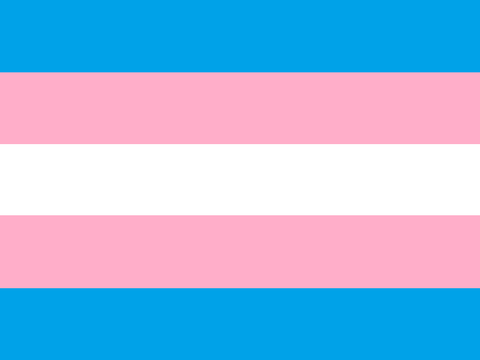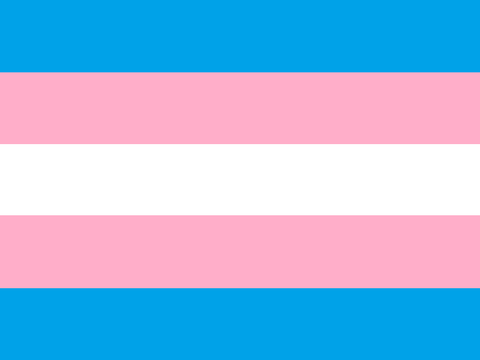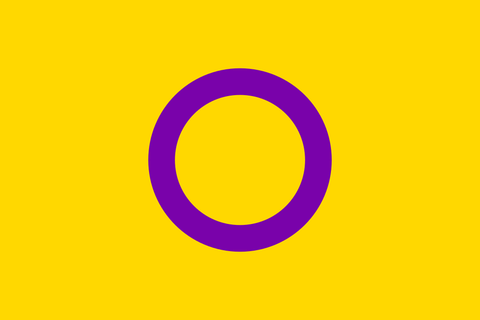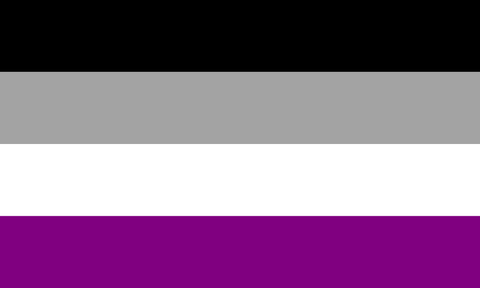Comprehensive Ways to Be a Genuine Ally of the LGBTQ+ Community // Queer Ally
| Updated on
In the ever-evolving landscape of societal norms and values, it is incumbent upon us all to foster an environment of inclusivity and respect. This is particularly true when it comes to being an ally to the LGBTQ+ community — a role that requires more than passive acceptance. It necessitates a deep understanding of the issues faced by this diverse group, a commitment to creating safe spaces, and a proactive approach in challenging homophobia, biphobia, and transphobia. This article aims to provide a comprehensive overview of how one can become an authentic queer ally.

Article continues below
Understanding the meaning of being an LGBTQ+ ally
But what exactly is an ally?
An ally, in the context of LGBTQ+ support, is an individual who, although not necessarily a member of the LGBTQ+ community themselves, pledges solidarity and support to LGBTQ+ individuals, amplifying their voices and advocating for their rights.
Being an ally to the LGBTQ+ community is an active and ongoing commitment, not a passive position or a label to adopt for mere cosmetic value. Indeed, it's a journey of learning, understanding, and standing up against discrimination in all its forms, from overt acts of prejudice to subtler, insidious micro-aggressions. As a queer ally, it is incumbent upon you to recognise your privilege, be open to critique, and continually strive towards inclusivity and respect.
Why is allyship important for the LGBTQ+ community?
Allies provide critical support, helping to challenge the prejudices that persist in society and contributing to a broader cultural shift towards equality. But the question often arises: why exactly is allyship significant for the LGBTQ+ community?
Validation and Acceptance: Having allies creates a sense of validation and acceptance for individuals within the LGBTQ+ community. It provides reassurance that they are valued and that their identities are recognised and respected. The presence of allies can often aid in the improvement of mental health and overall well-being within the community.
Support and Advocacy: Allies play a critical role in advocating for LGBTQ+ rights and promoting social justice. Their active engagement in supporting the community is crucial in raising awareness, combating discrimination, and promoting legislative changes. Given that LGBTQ+ youth are 4x more likely to attempt suicide than their heterosexual peers, any form of support is incredibly important.
“Allyship is far more than simply being 'friendly' to the LGBTQ+ community. It involves actively standing up for their rights and challenging homophobic and transphobic behaviours.”
Article continues below
Education and Awareness: Allies can help educate others on LGBTQ+ issues and experiences. By sharing their understanding, they can help dispel myths, counteract stereotypes, and lead others to become more educated and empathetic.
Create Safe Spaces: Allies can foster safe and inclusive spaces for LGBTQ+ individuals, both in personal and professional contexts. They can help to ensure that these spaces are free from homophobia, transphobia, and any form of discrimination. This is exceptionally important, since 48% of LGBTQ+ youth reported being bullied in school, and 41% of transgender individuals have attempted suicide.
Now that we've laid the groundwork, here are some important ways you can be a genuine and supportive queer ally.
Learn about the different identities within the LGBTQ+ community

Understanding the myriad identities within the LGBTQ+ community is a fundamental starting point for anyone striving to become an effective ally. These identities, intricate and diverse, transcend the constraints of traditional gender and sexual orientation norms. Owing to the complexity of these identities, it's essential to approach this learning journey with an open mind and a genuine willingness to comprehend.
So, what exactly does LGBTQ+ stand for?
The initialism LGBTQ+ is an all-encompassing term that represents individuals who identify as Lesbian, Gay, Bisexual, Transgender, and Queer or Questioning. The "+" is a symbol of inclusion, representing countless other identities that are part of the diverse sexual orientation and gender identity spectrum. It is designed to include those who identify as Intersex, Asexual, Pansexual, and other non-binary or gender non-conforming identities.
- Lesbian: Refers to women who are attracted to other women.
- Gay: Describes men who are attracted to other men. However, it is also used broadly to describe homosexual individuals, regardless of gender.
- Bisexual: Denotes individuals who are attracted to both men and women.
- Transgender: Refers to people whose gender identity doesn't align with the sex they were assigned at birth.
- Queer/Questioning: Queer is an umbrella term for people who don't identify as straight or cisgender. Questioning refers to people who are exploring their sexual orientation, gender identity, or both.
As an ally, it is crucial to remember that each person's experience with their identity is unique and personal. People may identify with multiple terms or none at all. In short, respect for each individual's self-identified terminology is fundamental in our role as a queer ally.
Article continues below
Understand the Challenges of the LGBTQ+ Community
As an ally, your journey begins with understanding the challenges that the LGBTQ+ community faces. The LGBTQ+ community, under the large and encompassing umbrella, includes several distinct groups, each with its own set of unique trials and tribulations. These challenges often range from discrimination, hate crimes, and legal inequality to societal rejection, mental health issues, and healthcare disparities. Interestingly enough, these issues are not isolated but rather interconnected, necessitating a comprehensive approach in order to fully address them.
Consider, for instance, the discrimination faced by LGBTQ+ individuals. It is not merely a case of isolated prejudice, but an intricate web of social, institutional, and systemic discrimination. It manifests itself in the workplace, in schools, in housing, and even in access to basic services. These conditions not only perpetuate inequality but also contribute to the high rates of mental health issues in the LGBTQ+ community.
The most important thing that allies can do is to educate themselves about the LGBTQ+ community.
- Laverne Cox
Moreover, understanding these challenges is not a static process but a continuous journey of learning and unlearning. The nature of these challenges can change over time, influenced by shifts in societal attitudes, legal developments, and even global events. For instance, the COVID-19 pandemic has had a unique impact on the LGBTQ+ community, exacerbating existing inequalities and presenting new ones.
Article continues below
Create and maintain safe spaces for LGBTQ+ individuals
Creating and maintaining safe spaces for LGBTQ+ individuals is an essential aspect of being a genuine ally. These spaces, both physical and virtual, provide a haven where queer people can express themselves freely, interact with others without fear of judgment or harm, and feel a sense of belonging and acceptance. The role of an ally in this endeavour, while multifaceted and demanding, is instrumental in amplifying the voices and experiences of the LGBTQ+ community.
First, it is paramount that allies understand the importance of respecting the identities and experiences of others. This often involves actively learning about diverse sexual orientations and gender identities, as well as the unique challenges faced by individuals within the LGBTQ+ community. Employing the correct pronouns, accepting individuals' self-identified labels, and refraining from making assumptions about someone's identity based on their appearance or behaviour, are all key components of creating safe spaces.
Secondly, allies must be proactive in challenging discriminatory behaviour, whether it be overt or subtle. This entails standing up against homophobia, biphobia, and transphobia, and intervening when witnessing harmful language or actions. It is equally crucial for allies to recognise and interrogate their own biases, and strive to unlearn harmful stereotypes and prejudices.
Thirdly, maintaining open and respectful communication is vital. Allies should listen actively to LGBTQ+ individuals, ask questions when unsure, and express their support openly. However, it's important for allies to avoid centering the conversation around themselves or their experiences - the focus should always remain on the LGBTQ+ individual or community.
Article continues below
Lastly, allies can contribute to creating safe spaces by advocating for LGBTQ+ inclusive policies, both in their personal and professional lives. This might mean pushing for comprehensive anti-discrimination policies in the workplace, supporting LGBTQ+-owned businesses, or advocating for queer-inclusive education.
Being a queer ally requires continuous learning, unlearning, and taking action. It's about more than just passive support - it's about creating and maintaining spaces where LGBTQ+ individuals feel seen, heard, and accepted.
Support LGBTQ+ individuals in the workplace

The workplace should be a place of safety, inclusivity, and respect for all, regardless of gender identity or sexual orientation. However, in reality, this is often not the case. For instance, 1 in 4 LGBTQ+ individuals experience discrimination in the workplace, and 48% of LGBTQ+ employees still remain closeted at work.
It is clearly important for allies to help nurture safe environments at work. Here are some ways to do that.
Active Allyship in Workplace Policies
When it comes to workplace policies, it's not enough to assume a passive stance. Queer allyship necessitates active involvement. This might involve lobbying for comprehensive anti-discrimination policies, calling out homophobia or transphobia when it's witnessed, or advocating for gender-neutral restrooms. Ensuring the protection, respect, and inclusion of LGBTQ+ employees is a responsibility borne by all.
Cultivating an Inclusive Environment
While policies provide a framework, the day-to-day interactions and behaviours shape the workplace culture. Allies can help create an inclusive environment by respecting everyone's pronouns, avoiding assumptions about people's personal lives, and stepping in when they see discriminatory behaviour. It's critical to remember that allyship isn't a title, it's a continual commitment to action.
Supporting Trans and Non-Binary Colleagues
Trans and non-binary individuals often face additional barriers in the workplace. As allies, it's our duty to help dismantle these barriers. This might involve educating ourselves and others about gender identities outside the binary, supporting a colleague through their transition, or advocating for policies that specifically support trans and non-binary employees.
Article continues below
Providing Resources and Education
Knowledge, in tandem with empathy, can breed understanding. Offering resources for education about LGBTQ+ issues can be instrumental in fostering an inclusive and supportive work environment. This could involve holding workshops, sharing articles, or facilitating discussions on how to better support the LGBTQ+ community.
To be a genuine supporter of the LGBTQ+ community in the workplace involves both action and understanding. It's about recognising the unique experiences and challenges faced by LGBTQ+ individuals and actively working to create a safe, inclusive, and respectful environment for all.
Debunking common misconceptions and stereotypes about the LGBTQ+ community
When engaging in the discourse of being a queer ally, it is essential to address and debunk the common misconceptions and stereotypes about the LGBTQ+ community. Misunderstanding and misinformation are often the root causes of prejudices; hence, dispelling them is a critical step towards fostering a more inclusive society.
Let us delve into some of these misconceptions, and discuss the realities that contradict them:
Misconception: Being LGBTQ+ is a choice
The belief that being LGBTQ+ is a choice is a widespread misconception. This falsehood is used to undermine the experiences of LGBTQ+ individuals and perpetuates harmful narratives that result in discrimination and marginalisation. In reality, sexual orientation and gender identity are inherent aspects of an individual's identity. These are not choices but are core components of a person's sense of self.
Misconception: All LGBTQ+ individuals have the same experiences
Another stereotype is the assumption that all LGBTQ+ individuals share the same experiences. The LGBTQ+ community is incredibly diverse, encompassing a variety of identities, backgrounds, and experiences. Attempting to homogenise these experiences oversimplifies the realities of the community and erases the unique struggles faced by different subsets within it.
Article continues below
Misconception: Bisexuality or Pansexuality is a phase or indication of confusion
A damaging stereotype is the belief that bisexuality or pansexuality is merely a phase or a sign of confusion. This misconception negates the validity of these identities, thereby causing harm and alienation. Bisexuality and pansexuality are valid sexual orientations, not phases or temporary states of uncertainty. It is crucial to respect these identities as part of the broader spectrum of human sexuality.
Misconception: Transgender individuals are deceiving people
In the realm of LGBTQ+ advocacy, one of the most pernicious misconceptions is that transgender individuals are attempting to deceive people. This fallacy, deeply rooted in ignorance and bias, contributes to the marginalisation of and discrimination against transgender people.
This myth is predicated on the flawed notion that one's gender identity is inherently tied to one's physical appearance or biological sex. In reality, gender identity - the internal sense of being male, female, both, neither, or something else entirely - is deeply personal and may not align with societal expectations or biological default.
Transgender individuals are not 'deceiving' others; they are merely living their truth.
Being an ally beyond Pride Month
Being an ally to the LGBTQ+ community is not a commitment confined to Pride month alone. It is, in fact, a year-round obligation that demands understanding, compassion, and active involvement. When one identifies as a queer ally, they are making a pledge to consistently stand in solidarity with the LGBTQ+ community, to confront their own biases, and to utilise their privilege in ways that amplify the voices and experiences of this often marginalised community. From attending Pride marches to advocating for comprehensive anti-discrimination laws, the role of an ally is multi-faceted, and its importance cannot be overstated.
Article continues below
Recognising intersectionality within the LGBTQ+ community and supporting diverse experiences

Understanding the term 'intersectionality' is crucial when it comes to supporting the LGBTQ+ community. Coined by Kimberlé Crenshaw in 1989, intersectionality refers to the interconnected nature of social categorisations such as race, class, and gender as they apply to a given individual or group, which can result in overlapping systems of discrimination or disadvantage.
Within the LGBTQ+ community, intersectionality plays a significant role. It is important to remember that individuals from this community are not a homogenous group — they may be of any race, religion, age, or socio-economic background. Their experiences of discrimination and inequality can be vastly different, influenced by their intersectional identities and the societies they live in. As an ally, recognising these complexities is a vital first step towards offering genuine support.
Acknowledging the Varied Experiences within the LGBTQ+ Community
It is essential to educate ourselves about the diverse experiences within the LGBTQ+ community. Recognising and acknowledging these experiences can help to foster a more inclusive environment. It's not enough to simply be a 'queer ally' — we must strive to be allies to all individuals within the LGBTQ+ community, respecting their diverse identities and experiences.
For instance, a transgender woman of colour may face not only transphobia but also racism, sexism, and possibly classism. Understanding these intersectional oppressions can help us to support her more effectively, by challenging the prejudices she faces on multiple fronts.
Steps to Support Intersectionality within the LGBTQ+ Community
So, how can we, as allies, support intersectionality within the LGBTQ+ community?
- Listen: One of the most powerful things an ally can do is to listen. Understand the experiences of LGBTQ+ individuals from diverse backgrounds. Let them lead the conversation about their experiences and needs.
- Educate Yourself: Learn about the different identities within the LGBTQ+ community, and understand the unique issues they face. You can do this by reading books, attending workshops, or listening to podcasts.
- Speak Up: Use your privilege to challenge discrimination and injustice. Speak up when you witness homophobic, transphobic, or racist remarks or actions.
- Support LGBTQ+ Organisations: Contribute to LGBTQ+ organisations that specifically support individuals from diverse backgrounds. This can be through donations, volunteering, or spreading awareness.
Being an ally is a journey of continuous learning and growth. By acknowledging intersectionality within the LGBTQ+ community, we can better understand and support the diverse experiences of these individuals. Remember, allyship isn't about speaking for others — it's about using our privilege to amplify the voices of those who are often unheard.
Article continues below
Wrapping it up: The Active Allyship Framework
Being a supportive ally to the LGBTQ+ community goes beyond merely expressing solidarity. It calls for active engagement, a constant learning curve, and a commitment to creating safe spaces for queer individuals. Within this context, the Active Allyship Framework comes into play, providing a structured approach to becoming a more potent and genuine ally for this community.
The active allyship framework consists of three major aspects – education, empathy, and action. Each element is vital in shaping behaviours that contribute to a more inclusive and equitable society.
- Education: An ally must continuously educate themselves about the struggles, histories, and experiences of the LGBTQ+ community. This can be achieved by reading articles and books, attending workshops and seminars, and engaging in conversations with members of the community.
- Empathy: Empathy is the ability to understand and share the feelings of others. It's more than just recognising the struggles of the LGBTQ+ community, it's about actively seeking to understand their experiences and emotions.
- Action: Being an ally requires taking action. This could be as simple as correcting homophobic language or as significant as advocating for policy changes. Action is the tangible manifestation of allyship.
In essence, the foundation of being an effective LGBTQ+ ally is rooted in education, empathy, and action. Implementing these principles into your interactions and attitudes will enable you to embody the essence of allyship. This is not a one-off accomplishment, but rather a lifelong commitment. It's a process of learning and unlearning, understanding and empathising, advocating and acting. It's about using your privilege to uplift those who have been marginalised and addressing the systemic barriers they face.
"To be an ally is to take on the struggle as your own. It's not just about providing a shoulder to lean on, it's about standing up and saying, 'This is my fight too.'"
Remember that being an ally is a journey of continuous growth and understanding. Mistakes will inevitably occur; however, they should not deter you but instead serve as opportunities for growth. As a genuine queer ally, it is not enough to stand idly by – you should strive to stand up for justice, equality, and acceptance. By amplifying the voices of the LGBTQ+ community, you contribute to a more inclusive and respectful society.

